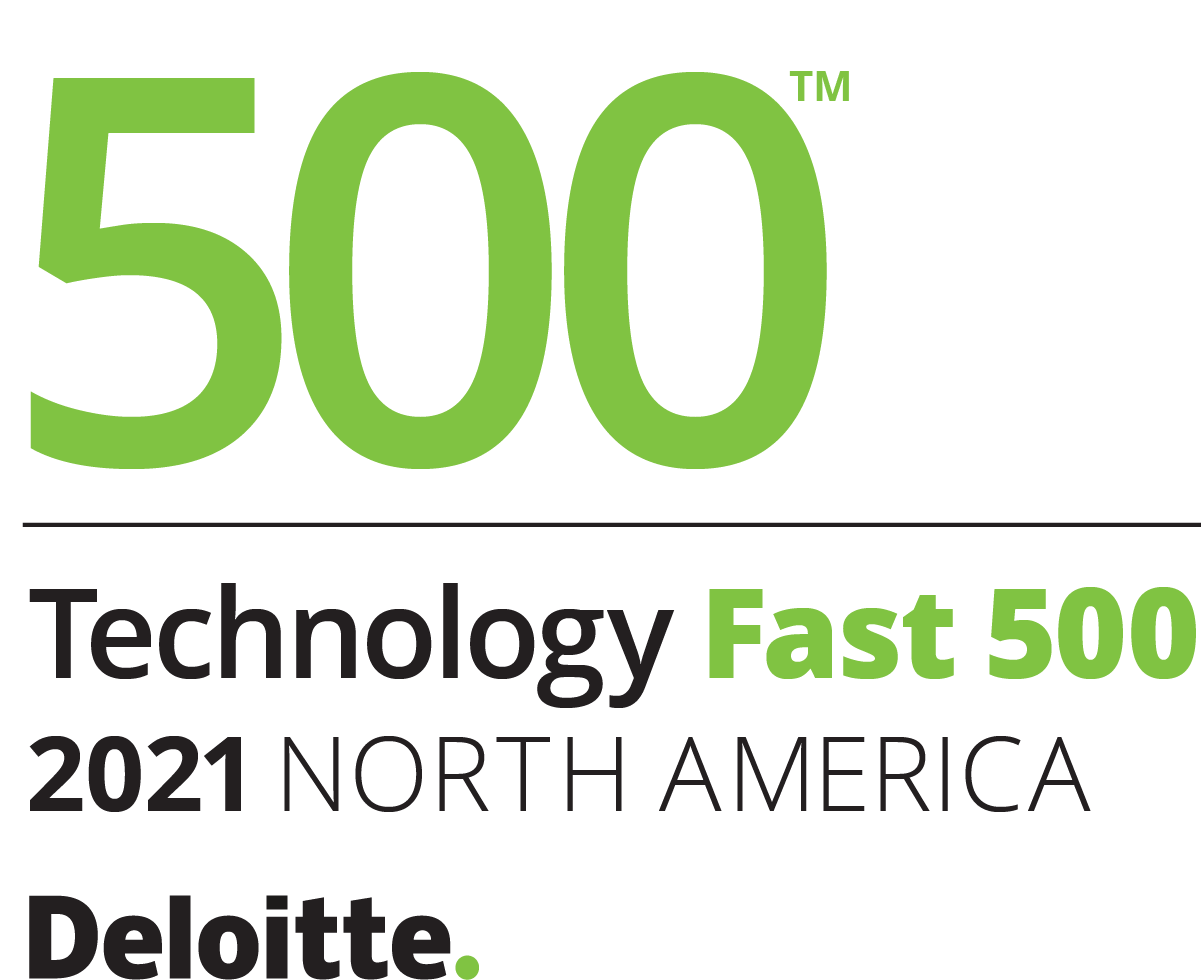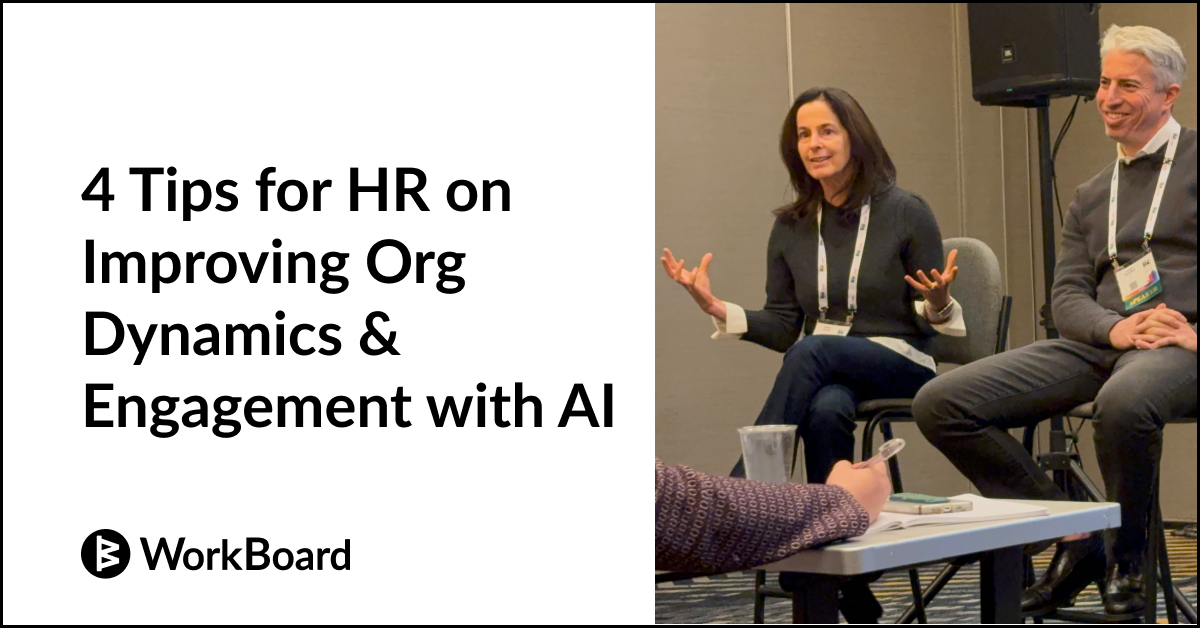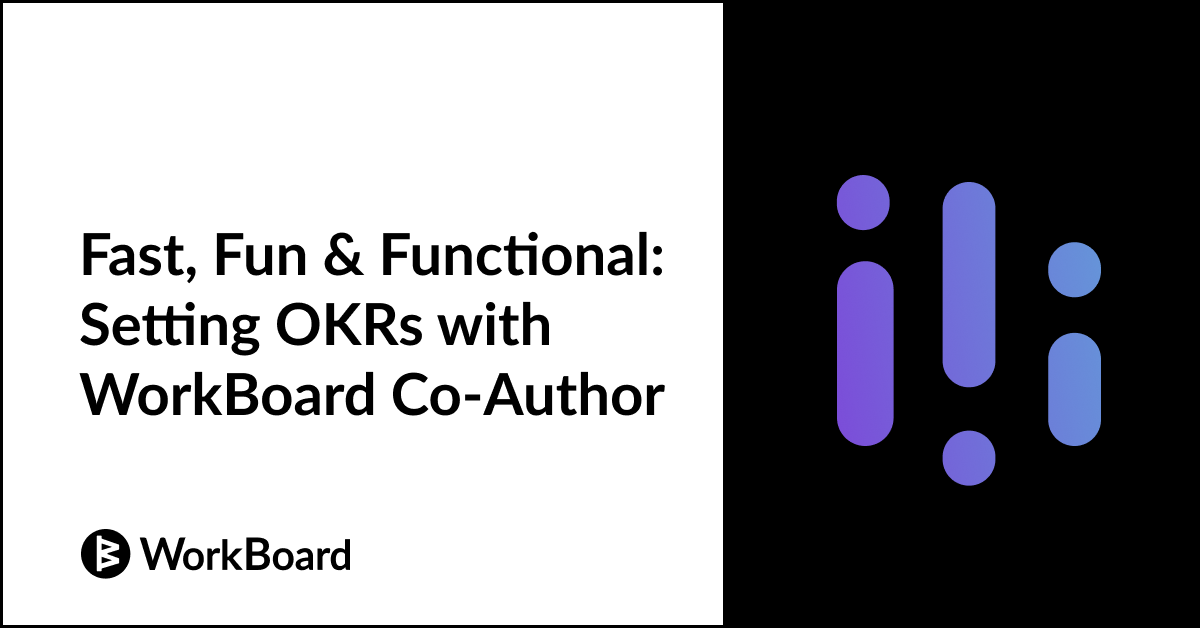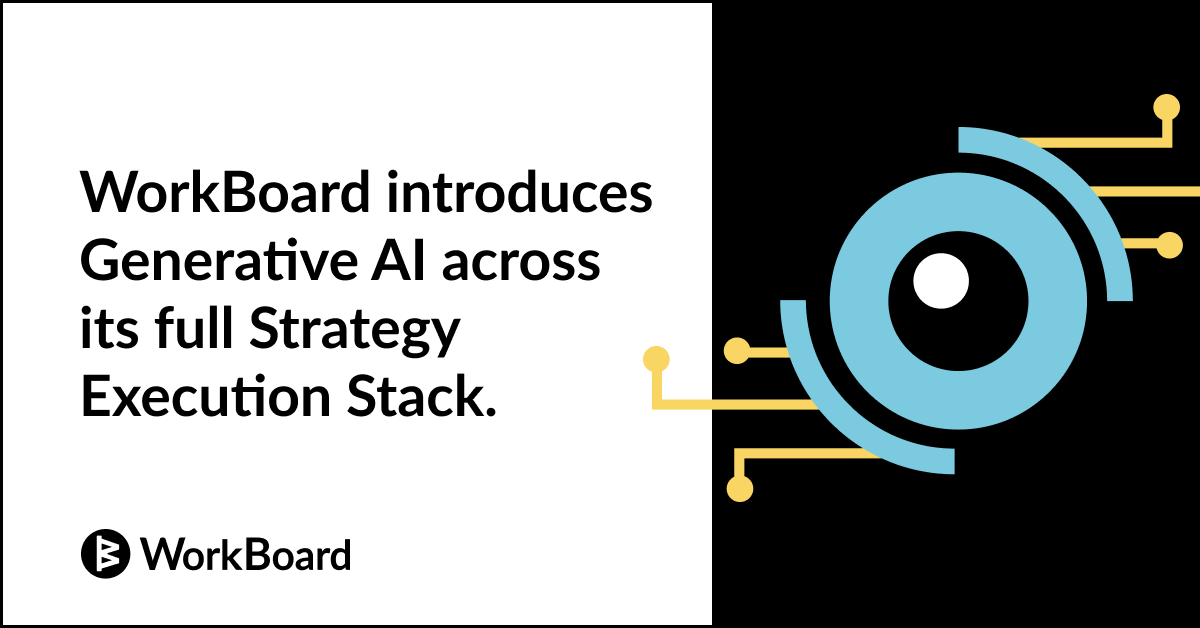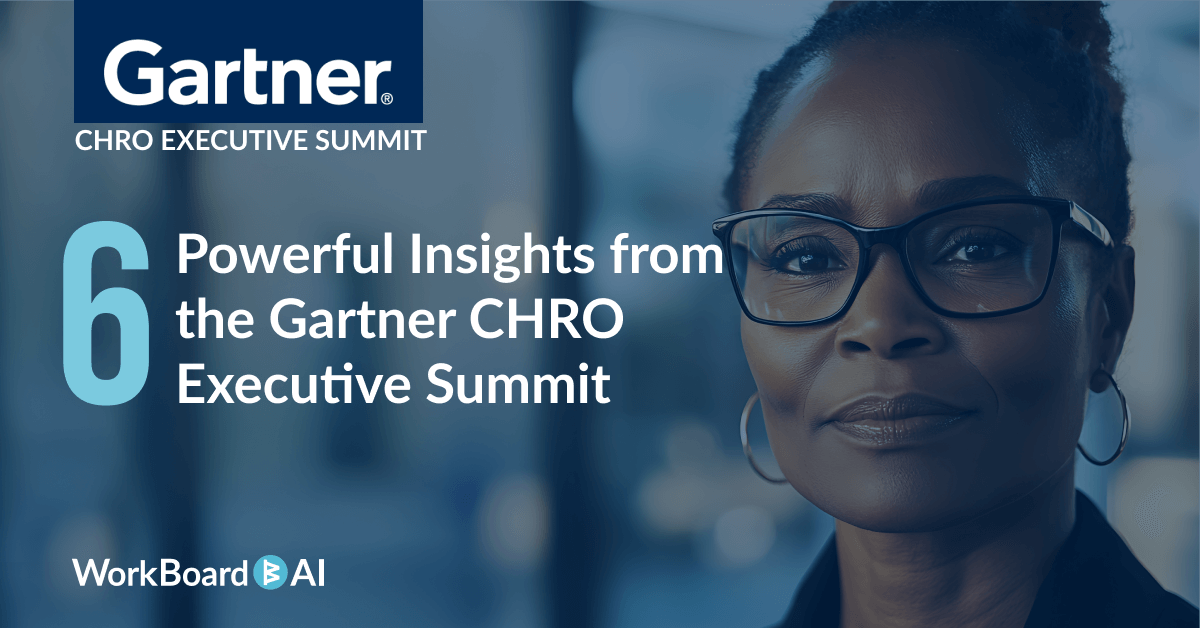
The role of the CHRO now holds a very special seat at the table when it comes to implementing AI throughout the organization. In the past, the HR department would often be the last to know about changes in strategic direction. Now, HR leaders are among the first to help steer the ship.
What’s changed? Let’s find out.
At the June 2025 Gartner San Francisco CHRO Executive Summit, HR leaders gathered in person to explore how workforce strategy, leadership, and AI are evolving. WorkBoard’s CEO Deidre Paknad hosted a session on Aligning Workforce Strategy with Business Goals alongside Michael Hoessl, CHRO at Birkenstock, and Jessica Raefield, CHRO at Rodan + Fields.
Together with CHROs from across industries, they surfaced six powerful insights on what it takes to lead HR into the next era.
1. Strategy is no longer static — and workforce planning can’t be either
Traditional five-year plans are giving way to real-time recalibration. Macro conditions and company priorities shift quicker than ever before. That pushes for a stronger alignment and constant communication between the CEO and the HR leaders.
Real business story
Birkenstock experienced an 8x growth in the past 8 years for its 251 years old history. Michael Hoessl credited the company’s success to a “moment-to-moment” feedback loop between the CHRO and the CEO — with weekly recalibration as the norm.
“Strategy gets broken into tactics, hiring plans, and day-to-day adjustments. Then we adapt. Again. And again,” he said. That tight cadence helped Birkenstock grow without breaking culture.
Key takeaway: Strategic workforce planning shouldn't be annual and isolated from the company’s strategic vision. It’s continuous, tactical, and tightly linked to business evolution where the CEO and the CHRO plan and pivot together.
2. AI is reshaping workforce composition, not just capacity
A great insight that the participants shared is that 40% of code and 90% of helpdesk tickets will be AI-generated next year. For some companies even this year. That’s why leaders are betting on capacity and quality — not just quantity.
Real business story
At Rodan + Fields, AI now handles 80% of customer service inquiries. Jessica Raefield shared how the company retrained its in-house team to tackle complex cases.
Meanwhile, managers use AI as a sounding board for performance conversations and workforce planning. The goal is not to have fewer people. The goal is to have better conversations and smarter capacity.
Although it may sound counterintuitive, AI is now helping managers frame better feedback and sound more human and empathetic. That’s a win worth celebrating.
Key takeaway: AI doesn’t eliminate headcount. AI improves the quality of the workforce as it is — especially when paired with upskilling and intentional adoption.
3. Chief of staff and leadership coaching agents can empower managers
We’re used to thinking that AI agents can do simple activities like writing code or content. This mindset is about to shift. Because now, AI can coach managers, surface insights, and reduce emotional friction in tough conversations.
Real business story
WorkBoard’s leadership coach AI agent uses business context in WorkBoardAI (like company strategy, team OKRs and SBI feedback frameworks) to help managers prepare for 1:1s, give better feedback, and lead more effectively. “It shortens the cycle to resolve what’s holding someone back — and what’s holding the team back,” Deidre Paknad, CEO of WorkBoard explained.
Other participants have shared that a custom-built “AI manager coach” can also let managers rehearse tough conversations. The agent scores the practice, offers tips, and boosts confidence — especially for introverted or analytical leaders.
Key takeaway: When AI reduces cognitive load, managers can show up with more empathy, clarity, and intention.
4. Culture can’t and shouldn’t scale as fast as headcount
HR professionals believe that growth shouldn’t be focused on adding roles but knowing which roles matter. Several CHRO professionals warned against chasing every ask or scaling teams without first scaling the culture.
Over the past few years, we’ve watched global organizations scale teams from 50 to 300 in just months — only to face painful layoffs a year later. Growth at that pace, without a clear and cohesive execution plan, rarely sticks.
Culture doesn’t take hold overnight. It takes time, energy, and persistent effort to align hundreds of new team members around shared goals and values. Without that, the cracks surface quickly.
Real business story
At Rodan + Fields, Jessica had to say “no” more than once. “One in three roles gets greenlit. The rest we reassess later,” she shared. “Our labour costs have gone down year after year because we’re slow to scale.”
“Hiring can’t outpace culture,” Hoessl echoed. “Even as we grew quickly, we stayed lean—our labour costs have gone down year over year.”
Key takeaway: Smart growth means selective hiring. Alignment beats acceleration.
5. Five-year plans still exist — but they need mid-course correction
Some industries still rely on long-term planning (for example energy, infrastructure, or life sciences), but even those plans must include mechanisms for feedback and adjustment.
Real business story
Eric, the CHRO of a global engineering and design firm, shared how their organization manages a 10-year strategy with a 2–3 year refresh cycle. That structure is necessary in sectors like infrastructure and science that don’t allow for quick pivots.
But even in long-range planning, one of the risks that become prominent is related to having the strategy on top of mind. When the cycle is so long, strategy becomes “a story someone told once.” People forget it. Without an active day-to-day or month-to-month alignment, the plan gets to a dead end.
Key takeaway: For hard-to-pivot sectors multi-horizon planning is a necessity. This gives organizations the agility to stay relevant and the teams to stay focused.
6. HR must drive AI adoption
During the event, CHROs voted on a poll asking: What’s the role of HR in AI adoption?
Turned out that 50% shared that HR is a driver, and 50% - a collaborator. Looks like AI is redefining who leads that change. While tech teams like engineers and IT may build and manage the tools, HR teams are the ones who embed them into the culture, skillsets, and workflows of the organization.
Across the group, many companies shared they have AI councils — intentionally cross-functional, blending IT, HR, and business leaders. But one truth echoed louder than others: if HR doesn't lead AI adoption, no one will do it well.
“HR is often the only function that knows how to scale change - not the CMO or the CIO. It’s HR.”
Real business story
At Poshmark, the CHRO Jewelyn shared a moment that captured this shift in power. Their board demanded 3X AI enablement in one quarter instead of three. The first people who got the news were the CEO, CTO… and then CHRO.
“Finance didn’t know. Marketing hadn’t heard,” she said. “HR had to go first — because we had to get the workforce ready before anything else.”
This cadence is becoming the norm, because organizations no longer need pilots and policies only. Real adoption takes a plan, a playbook, and change management experience. The HR department is the only team built for that.
Key takeaway: The HR role is shifting from a collaborator to key strategic driver. Change management, workforce enablement, and policy handling are strategic levers HR must now own.
Final words
From the pandemic to the rise of AI, HR has evolved from administrator to architect. The role is no longer simply supporting transformation — it’s leading it.
The challenge now is using that seat at the table to align workforce capacity with leadership ambition, while guiding culture, building capability, and driving clarity at scale.
About the event
The Gartner San Francisco CHRO Executive Summit (June 25, 2025) brought together senior HR leaders for two days of candid conversations, practical insights, and strategic foresight. Focused on the future of work, the summit tackled themes such as workforce transformation, talent strategy, AI enablement, organizational agility, and leadership in complexity.
Attendees included CHROs and Heads of HR from some of the world’s most influential companies—among them Google, Adobe, Genentech, Broadcom, Gilead Sciences, Hewlett Packard Enterprise, Levi Strauss & Co., Dolby Laboratories, Pixar, and Gap.
The event was exclusively designed for CHROs and Heads of HR, and featured boardroom discussions, peer-led panels, and networking opportunities—all in a closed-door setting that encouraged honesty.
The common thread across all sessions was the HR’s seat at the table is secure—but what leaders do with it next will define the decade ahead.
